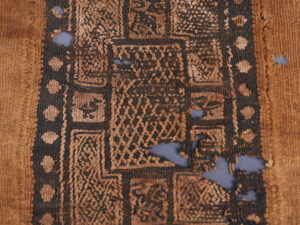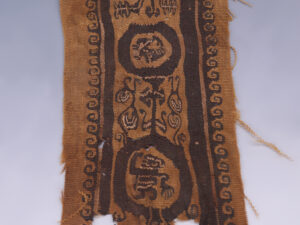Coptic textiles, whose production began in the 3rd and 4th centuries AD in Egypt, were hand woven with unbleached linen warps and dyed wool wefts. The majority that have survived, were used to decorate tunics; a clothing staple of the time. Influenced by a fusion of cultures and history, Coptic textiles evolved with history. During the Early Coptic period (3rd – 4th centuries AD), the primary decorative themes were taken from nature and Classical mythology, with Hellenistic tradition still popular. By the Middle Coptic period (5th – 7th centuries AD), depictions included abstract natural elements and Christian symbolism. The third period of textiles refers to the period of Islamic dominance, when the Copts were still able to survive despite their oppression.
 Coptic Textile with Animals
$271.54
Coptic Textile with Animals
$271.54
 Coptic Textile Strip with Dancer, Zoomorphic and Floral Motifs
$380.15
Coptic Textile Strip with Dancer, Zoomorphic and Floral Motifs
$380.15
Coptic Textile Strip with Geometric Motifs
$325.84
An Egyptian Coptic textile fragment of a decorative band, woven in black and red wool onto coarse, unbleached linen. The fragment features a single decorative band comprised of two arcaded trefoil borders, enclosing a frieze of geometric patterns. The central motifs consist of alternating red and ecru lozenges with each section separated by a thick dark line. This decorative strip could have easily been part of a tunic as a decoration.
1 in stock
Additional information
| Weight | 16.5 g |
|---|---|
| Dimensions | 20 × 10 cm |
| Culture | Ancient Egyptian |
| Material | Linen (Flax), Wool |
| Region | North Africa |













